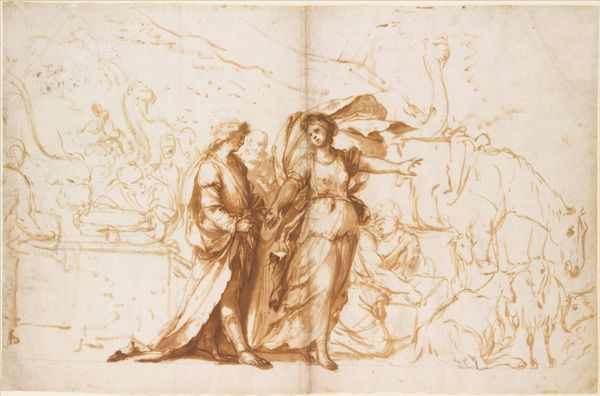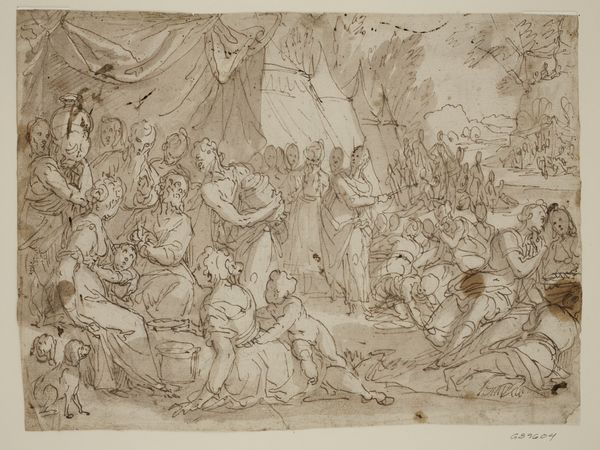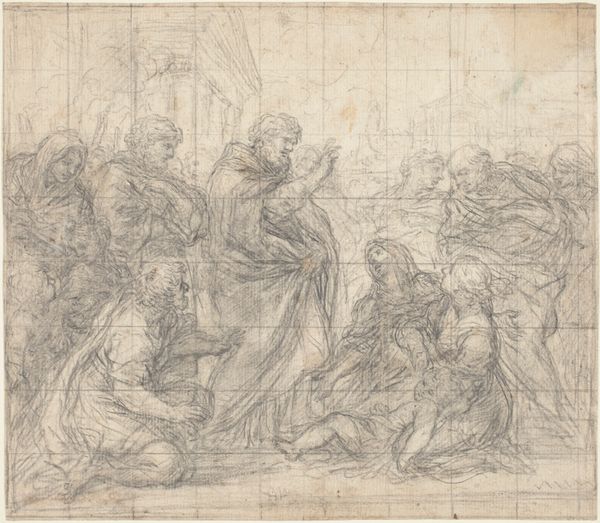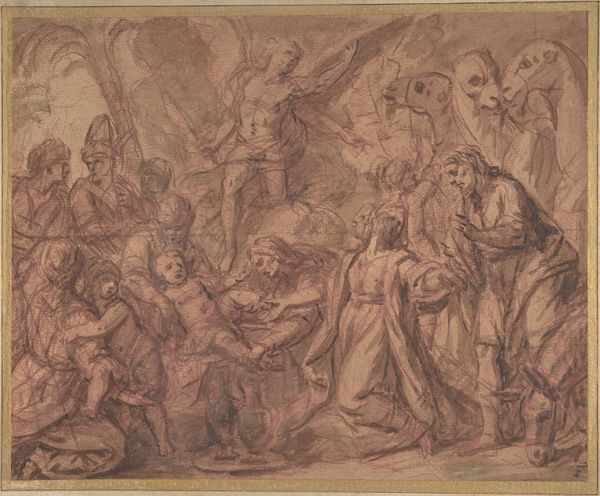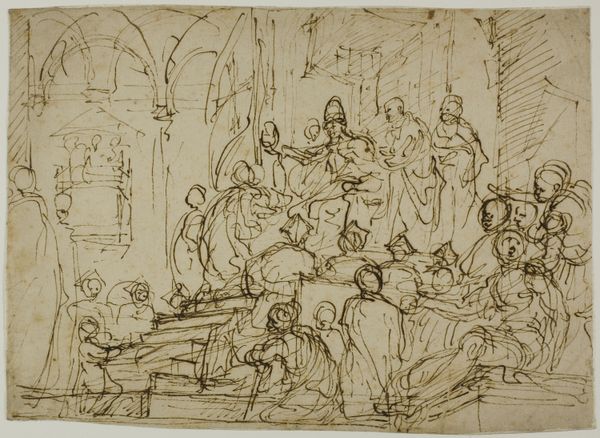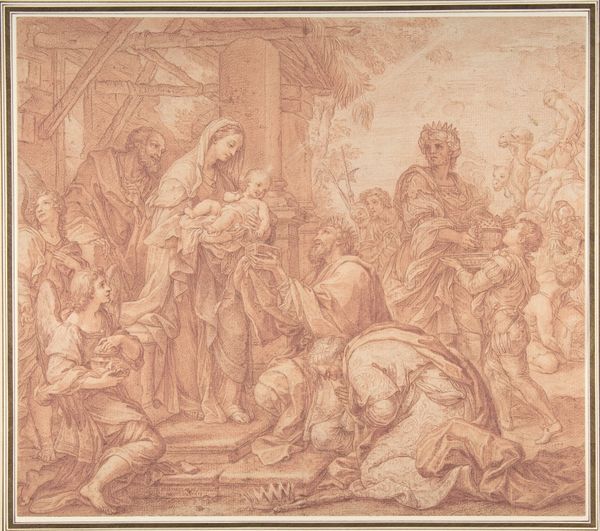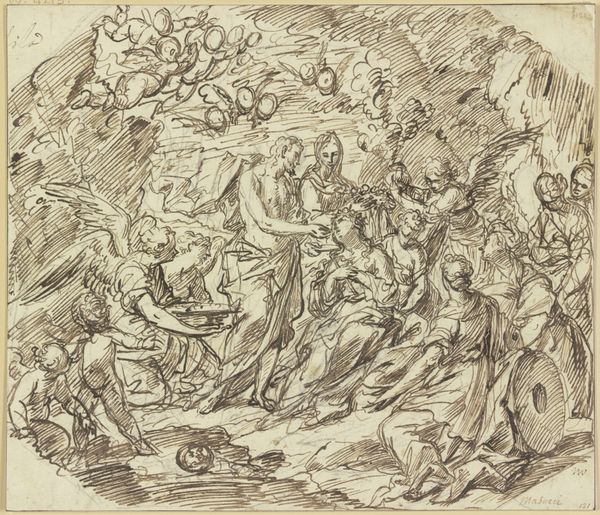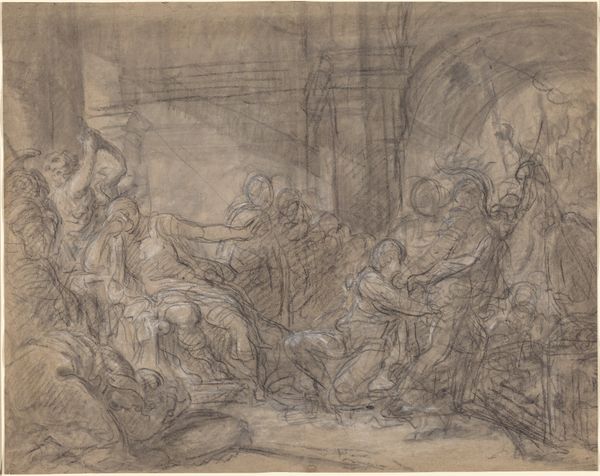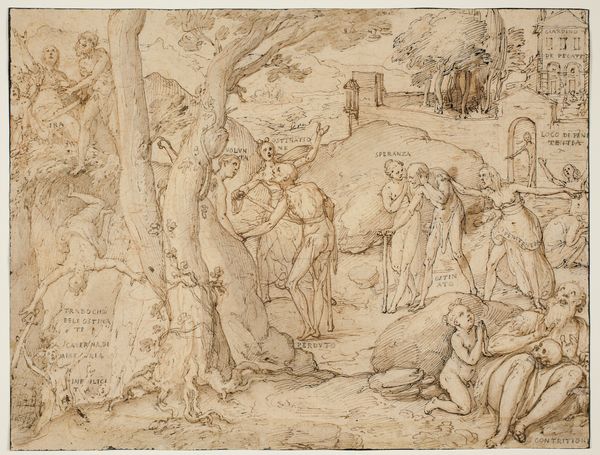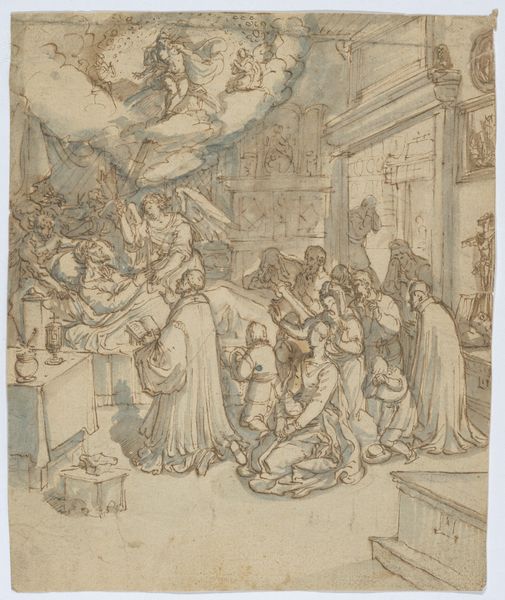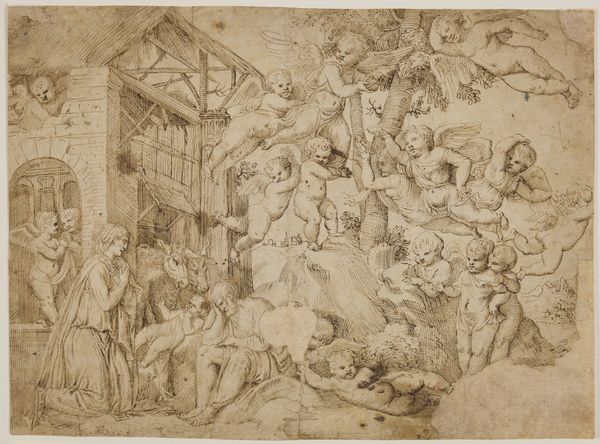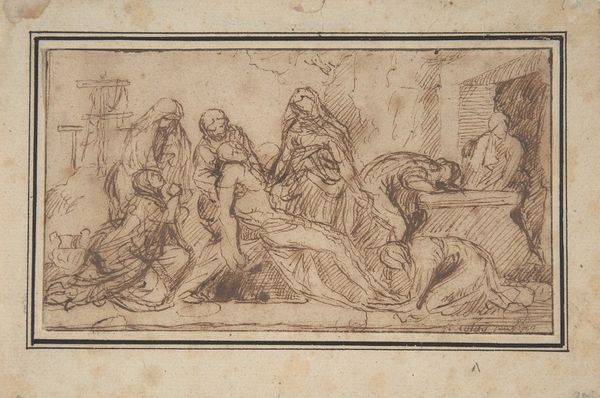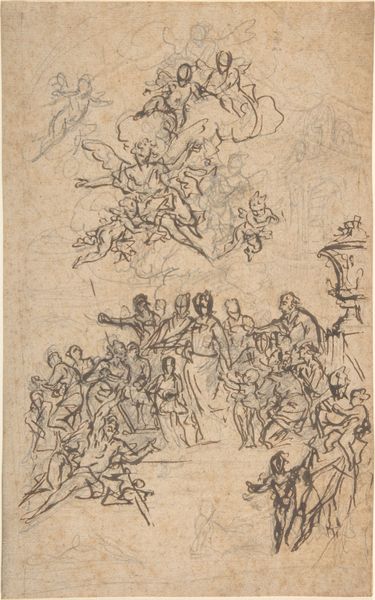
drawing, ink
#
drawing
#
baroque
#
figuration
#
ink
#
history-painting
Dimensions: Overall (approximate): 28.7 x 41.5 cm (11 5/16 x 16 5/16 in.) support: 40 x 53.7 cm (15 3/4 x 21 1/8 in.)
Copyright: National Gallery of Art: CC0 1.0
Curator: Let’s turn our attention to this captivating drawing, "The Trinity and the Virgin Appearing to Ecclesiastics." Attributed to Theodor Boeyermans, this piece utilizes ink to portray a historical, religious scene. Editor: My first impression is a swirling vortex of figures, an ethereal yet assertive drama unfolding. There's an unsettling blend of reverence and chaotic energy emanating from the composition. Curator: Yes, Boeyermans captures the dynamism typical of the Baroque, doesn't he? Consider the visual rhetoric at play here, and how the imagery works to assert the authority of the church by staging such an awesome divine appearance. Editor: Exactly, but doesn't that staging itself betray an underlying tension? I see the drawing reflecting an attempt to solidify religious dominance in a period riddled with theological disputes and power struggles, particularly when considering the absence of a definitive date. It's not simply an assertion of faith, but a performance of it in a context of uncertainty. Curator: That's a compelling reading, highlighting the power dynamics. The choice to depict the Trinity and the Virgin bestowing their grace upon the clergy undoubtedly elevates their status within the social hierarchy. Notice the figures being subjugated at the bottom, further underlining who benefits from this theophany. Editor: And that subjugation is vital to understanding the era. The "divine right" discourse gave implicit consent to all types of injustice; even in devotional images such as this. Who are those ecclesiastics being glorified? Who is systematically excluded? This work forces us to confront those hard questions. Curator: It reminds us that even supposed 'sacred' depictions often serve specific social and political agendas. I find it significant how Boeyermans is not merely recording a vision, but constructing one to emphasize institutional strength. Editor: Right, and viewing "visions" and, for that matter, Baroque art generally as visual tools to perpetuate a system, allows us to better analyze its effect. Boeyermans presents us with an ideal vision, but we need to be clear-sighted as we analyze it. Curator: By exploring Boeyermans’ composition in context, we reveal how even ostensibly religious art can reinforce hierarchies of power. Editor: Agreed. I walk away thinking less about what this vision presents, and more about the social realities it reflects, reinforces and actively works to legitimize.
Comments
No comments
Be the first to comment and join the conversation on the ultimate creative platform.
